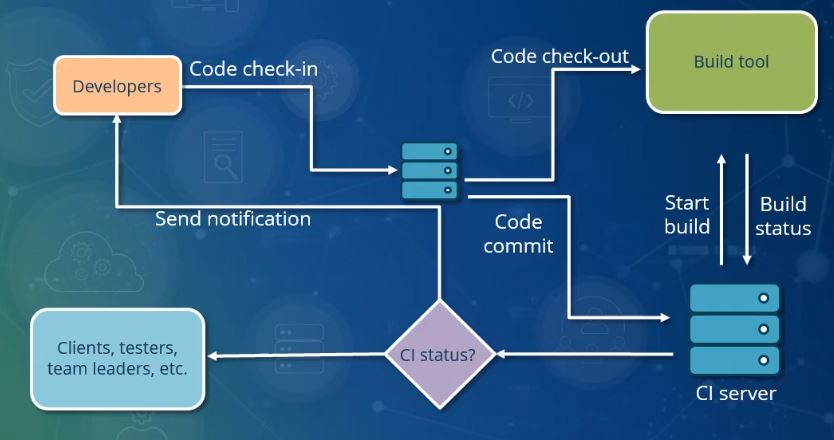Recommendation Systems
- Introduction to Recommender Systems
- Data Collection and Preprocessing
- Ranking Algorithms and Logistic Regression
- Advanced Ranking Algorithms
- Deep Learning for Recommender Systems
- Transformers in Recommender Systems
- Training and Validating Recommender Systems
- Performance Evaluation of Recommender Systems
- Personalization and Context-Aware Recommender Systems
- Ethical and Social Aspects of Recommender Systems
- Productionizing Recommender Systems
- Model Serving and A/B Testing
Productionizing Recommender Systems
Continuous Integration and Deployment for Recommender Systems

Software development practice based on frequent submission of granular changes.
Continuous Integration (CI) and Continuous Deployment (CD) are crucial practices in modern software development, including the development and maintenance of recommender systems. These practices allow for frequent code changes, automated testing, and consistent deployments, ensuring the system remains robust, efficient, and up-to-date.
Introduction to Continuous Integration and Continuous Deployment
Continuous Integration is a development practice where developers integrate code into a shared repository frequently, preferably several times a day. Each integration is then automatically tested and verified by an immediate automated build, allowing teams to detect problems early.
Continuous Deployment is the practice of automatically deploying the integrated changes to the production environment after passing through the stages of the automated testing pipeline. It ensures that the software can be released to users at any time, enhancing the speed of delivery.
The Role of CI/CD in Maintaining and Improving Recommender Systems
In the context of recommender systems, CI/CD can play a vital role in maintaining the system's performance and improving it over time.
-
Maintaining Performance: As recommender systems are data-driven, their performance can be influenced by changes in user behavior or item characteristics. CI/CD allows for frequent updates to the system, ensuring it remains responsive to these changes.
-
Improving Over Time: With CI/CD, improvements to the system, such as new features or enhanced algorithms, can be integrated and deployed quickly. This allows the system to benefit from these improvements without delay.
Best Practices for Implementing CI/CD in Recommender Systems
Implementing CI/CD in recommender systems involves several best practices:
-
Automated Testing: This includes unit tests, integration tests, and system tests. For recommender systems, it's also crucial to include tests for the recommendation quality, such as precision, recall, or NDCG.
-
Version Control: All changes to the codebase should be tracked using a version control system. This allows for easy rollback if a problem is detected in production.
-
Monitoring and Logging: Once deployed, the system should be continuously monitored. This includes tracking key performance indicators (KPIs) and logging system events for future analysis.
-
Collaboration and Communication: CI/CD is not just about tools and practices; it's also about the team. Developers, data scientists, and operations staff need to work together closely and communicate effectively to make CI/CD work.
Case Studies of Successful CI/CD Implementation in Recommender Systems
Many leading tech companies have successfully implemented CI/CD in their recommender systems. For example, Netflix uses CI/CD to continuously improve its recommendation algorithms, allowing it to respond quickly to changes in user behavior. Similarly, Amazon uses CI/CD to frequently update its product recommendation system, ensuring it remains relevant and effective.
In conclusion, CI/CD is a powerful practice for maintaining and improving recommender systems. By integrating changes frequently, testing them automatically, and deploying them consistently, recommender systems can remain robust, efficient, and up-to-date.